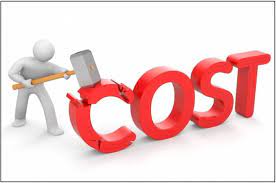Reduce Manufacturing Costs ,We see it all! Companies that thrive in the most competitive environments, and companies that should be thriving. They all come to us looking for better ways to do things, streamline systems, reduce manufacturing costs and increase profitability,With NanoPro,
we provide consultancy services for industrial food businesses that produce at different scales, We produce the most suitable solutions for your needs and support you in applying them to your projects. We have knowledge and experience in different fields in the food industry, The companies that thrive and succeed have many things in common, We are going to share these common success traits over the next few months. Our first topic, which is familiar to everyone in the manufacturing sector – is effective ways to reduce manufacturing costs. This topic is very important and involved. We will be highlighting the most effective manufacturing cost reduction strategies.

Our most successful clients focus on ways to improve costs, profits, and flexibility by reducing manufacturing costs. Manufacturing cost reduction efforts can result in significant product cost savings, manufacturing cost-saving, and life cycle cost saving. As a result, when companies implement all ten of the following strategies for manufacturing cost reduction we see the greatest level of success.
Table of Contents
Costs associated with Product Design (Reduce Manufacturing Costs )
To Reduce Manufacturing Costs Since product development determines 80% of product cost, it makes sense to start here when looking at reducing manufacturing costs. In fact, the concept/architecture phase alone determines 60% of the cost. Product architecture determines product definition, technology, team composition, technology, part combinations, and off-the-shelf parts.
This phase also determines strategies for manufacturing, supply chain, vendors, quality, reliability, service, variety, configuration, customizations, and derivative products. These decisions have the highest impact of all manufacturing cost reduction strategies. Staying focused on the top strategies to lower cost is a good place to start. These include:
- Design to minimize part cost and material overhead, a huge component of which is buying off the shelf parts
- Designing out quality costs, where the return on investment doesn’t warrant the cost of the quality
- Eliminating change orders by focusing more time on the planning stage
- Focus on vendor-partnerships that can build value and ultimately reduce manufacturing costs
Implement Lean Manufacturing/Production Principles Reduce Manufacturing Costs
Reduce Manufacturing Costs, Adopting lean manufacturing principles can reduce manufacturing costs by increasing labor productivity, cutting production through-put times, reducing inventories, and cutting errors and scrap by as much as half. The core principle of lean production is to do more with less, the first place to focus is eliminating waste.
Waste is defined as any activity that does not add value from the customer’s perspective. According to research conducted by the Lean Enterprise Research Centre (LERC), 60% of production activities in a typical manufacturing operation are waste – they add no value at all for the customer. The good news, just about every company has the opportunity to use lean manufacturing techniques to cut manufacturing costs.
A great place to start implementing lean production is by understanding the forms of waste and how to eliminate them. Forms of waste include waiting, transportation, inventory, motion, over-production, over-processing, defects, and wasting talent. We will cover this in more detail next month.
Reduce overhead manufacturing costs with build-to-order and mass-customized inventory (Reduce Manufacturing Costs)
Several key components to cutting overhead costs in manufacturing is to produce standard products that can be built to-order without forecasts or inventory, and produce special products through mass-customization on-demand. In both approaches, once a confirmed order for products is received, products are built.
The results can be staggering. Inventory Carrying Costs can be eliminated (the standard “rule of thumb” for inventory carrying cost is 25% of the inventory value on hand), and procurement costs can be reduced with automatic, on-demand resupply. In theory, better responsiveness leads to more sales. Although not a manufacturing cost cutting measure, certainly a positive outcome.
Standardize parts to reduce manufacturing costs
In Build-to-Order and Mass Customization manufacturing cost reduction is realized at the parts and raw materials level. Standardization supports the fundamental concept of build-to-order and mass customization in that all parts must be available at all points of use which eliminates the setup to find, load, or kit parts.
Standardization reduces the number of part types and makes it easier for parts to be pulled into the assembly. Fewer types of parts ordered in larger quantities will reduce part and material overhead costs. Floor space reduction, overhead cost cuts, and time saved in setup, logistics, and supply chain management are additional benefits. Other types of standardization which can also affect cost include tools, features, raw materials, and processes.
Rationalize the product line to focus on the most profitable products
An often-overlooked opportunity to simplify operations and free up critical resources resulting in improved productivity, profit, and cash flow—is the rationalization of the product line and all of its component parts. Product line rationalization focuses on the most profitable products and eliminating or outsourcing low-profit products that have high overhead demands and are not compatible with manufacturing cost reduction strategies.
Experience with first-time product line rationalization efforts suggests that more than 60 percent of a product line contributes less than 10 percent of the total margin. Successful rationalization initiatives have cut total supply chain management costs up to 50 percent and improved performance on inventory turns up to 100 percent among top industry performers.
Simplify supply chain management
When designing new products or re-evaluating older products, the products should be designed with standard parts. If there are too many different types of products or materials, a steady flow of the product cannot be arranged. This is due to the variety and unpredictability of demand for that product. The key to designing high-volume products is to order the components needed ahead of time based on the company’s forecasts.
Rationalization also aids in the simplification of supply chain management. By rationalizing these products away completely, your supply chain is instantly simplified. In addition, establishing Vendor/Partnerships and involving them in product design is another method of supply chain simplification. As part of the design team, vendors can recommend low-cost products that will be readily available for product creation. We frequently see too many vendors for the same products. While this may result in a few pennies in savings, the cost of purchasing and payables time may exceed these savings. When you factor in the extra requirements for put-away (and source traceability if you are in a regulated industry) and picking you are probably in a negative situation.
Overall, simplifying supply chain management can be beneficial in reducing manufacturing costs and improving the manufacturing process. Simplifying all parts of the process including planning, sourcing, production and delivery saves costs, and improves efficiency and quality of products.
Evaluate the cost/benefit of quality
Quality cost reduction is an important step in reducing manufacturing costs. Without a continual assessment of and improvement of the manufacturing process, the Cost of Quality can be 15% to 40% of total revenue. Quality cost reductions produce an increase in profits.
The first step to eliminating quality costs involves designing in quality. This method assures high quality and reliability in the design of the product, preventing costly errors, defects, reworks, and overhead demands. Designing in quality requires a significant amount of planning and preparation. Simplifying designs, taking past quality problems into consideration, automating processes, and thoroughly documenting every step of the design are all steps to reduce quality costs.
In addition, quality costs can be reduced by rationalizing products. Rationalizing away unusual, low-profit and low-volume products raise net factory quality. This avoids wasting quality resources on inherently lower-quality products.
To study effective economic feasibility and reduce costs, benefit from the expert team of Pronano Food Consulting and Manufacturing Company
